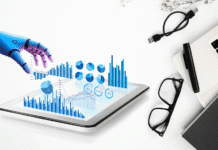 MAIN FOCUS:
MAIN FOCUS:
Data Breaches
- Increased Targeting of Healthcare: Healthcare organizations remain prime targets for cybercriminals, often due to the sensitive nature of the data.
- Supply Chain Vulnerabilities: Attacks on third-party vendors can lead to significant breaches, as seen in recent incidents affecting various industries.
Ransomware Attacks
- Rise in Ransomware-as-a-Service: More sophisticated ransomware operations are emerging, making it easier for less experienced criminals to launch attacks.
- High-Profile Incidents: Major companies and local governments have experienced high-profile ransomware attacks, often resulting in substantial financial losses and data exposure.
Security Protocols
- Zero Trust Architecture: Many organizations are adopting zero trust models, which emphasize verifying every user and device attempting to access resources.
- AI in Cybersecurity: The use of artificial intelligence for threat detection and response is growing, helping to identify and mitigate risks faster
Data Breaches
- Healthcare Targeting:
- Trend: Cybercriminals increasingly target healthcare organizations due to the sensitive nature of health data, which is often worth more on the dark web than other types of data.
- Impact: Breaches in healthcare can lead to identity theft, fraud, and the exposure of personal health information. This not only affects patients but can also result in regulatory fines and reputational damage for the institutions involved.
- Recent Examples: Various healthcare systems have reported breaches, often following ransomware attacks, where attackers steal data before encrypting systems.
- Supply Chain Vulnerabilities:
- Trend: Attackers exploit vulnerabilities in third-party vendors to gain access to larger organizations.
- Impact: A breach in a small vendor can lead to data loss in a major corporation, affecting customer trust and financial stability.
- Recent Examples: Incidents similar to the SolarWinds attack, where compromised software updates allowed attackers to infiltrate large enterprises, illustrate this risk.
Ransomware Attacks
- Ransomware-as-a-Service (RaaS):
- Trend: The emergence of RaaS has lowered the barrier for entry into cybercrime, allowing less technically skilled individuals to launch attacks using ready-made tools.
- Impact: This proliferation has led to an increase in the number and diversity of ransomware attacks, affecting all sectors, including schools, municipalities, and large corporations.
- Recent Examples: Reports indicate that groups like Conti and REvil have been particularly active, leveraging RaaS models to orchestrate widespread attacks.
- High-Profile Incidents:
- Trend: Major companies and critical infrastructure have faced significant ransomware attacks, often leading to public outcry and increased scrutiny.
- Impact: These attacks can cause operational disruptions, financial losses, and heightened security measures across industries.
- Recent Examples: Attacks on companies like Colonial Pipeline and JBS Foods highlighted vulnerabilities in essential services and prompted discussions about the need for better security protocols.
Security Protocols
- Zero Trust Architecture:
- Trend: The zero trust model is gaining traction as organizations shift away from traditional perimeter-based security to a more comprehensive approach that assumes breaches could occur at any point.
- Impact: Implementing zero trust requires continuous verification of user identities and device security, thereby minimizing risks associated with insider threats and compromised credentials.
- Recent Developments: Organizations are increasingly adopting multi-factor authentication (MFA), identity and access management (IAM) solutions, and network segmentation as part of their zero trust strategy.
- AI in Cybersecurity:
- Trend: The integration of artificial intelligence and machine learning in cybersecurity tools is on the rise, providing enhanced threat detection and automated response capabilities.
- Impact: AI can analyze vast amounts of data to identify anomalies and potential threats faster than human analysts, improving response times and reducing the window of vulnerability.
- Recent Innovations: New AI-driven security platforms are emerging that can predict potential attacks based on historical data, helping organizations proactively strengthen their defenses.



















